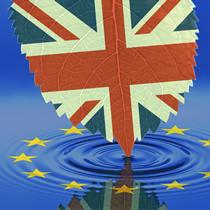 Issued: March 2017
Issued: March 2017
What will Brexit mean for the environment?
On 1 February 2017, MPs voted to allow Theresa May to invoke Article 50 and begin Brexit negotiations. Most of our environmental law is based on EU law, so there is no certainty what the outcome will be on environmental law in the UK.
The government’s position
The Great Repeal Bill (announced in October 2016) will end EU supremacy over UK law. All relevant EU law will become UK law, unless otherwise amended.
The Brexit White Paper of February 2017 states the government’s commitment:
‘to ensuring we become the first generation to leave the environment in a better state than we found it. We will use the Great Repeal Bill to bring the current framework of environmental regulation into UK and devolved law… We want to take this opportunity to develop over time a comprehensive approach to improving our environment in a way that is fit for our specific needs.’
The UK government will issue Article 50 later this month.
The devil will be in the detail
Theresa May’s 12 principles guiding Brexit negotiations made no reference to environmental protections.
The White Paper also hints at changes ahead by stating:
‘Once we have left the EU, parliament (and, where appropriate, the devolved legislatures) will then be able to decide which elements of that law to keep, amend or repeal’.
Nobody can be certain what changes the UK government may make to environmental legislation. Many believe it likely to be in the direction of ‘cutting red tape’.
The consequences could be very significant for developers and the environment alike.
Key laws in the spotlight
The EU Water Framework Directive
The Water Framework Directive (WFD) introduced ambitious new objectives to protect and restore aquatic ecosystems, to ensure sustainable water for people, business and nature.
Its aim is ‘good status’ for all ground and surface waters (rivers, lakes, transitional waters, and coastal waters). Key to this are the River Basin Management Plans (RBMP), which identify actions needed in river basins to deliver WFD objectives.
The WFD requires developers to demonstrate that any instream or riparian activity supports the objectives of the local RBMP or meets strict sustainability criteria.
WHS works closely with developers to do this with a high level of confidence. Recently this has included weir-pool assessments for low-head hydropower schemes on the River Thames, and the replacement of supporting walls to stop gardens along a row of houses collapsing into an adjacent stream.
However, there has been frequent criticism of the UK for non-compliance with EU environmental standards and legal challenges concerning failure to achieve water quality standards.
The UK might decide to relax standards and reduce controls in this area.
The EU Environmental Impact Assessment Directive
The new EIA directive places greater emphasis on resource efficiency, climate change, human health and disaster prevention. It also includes new requirements on monitoring and enforcement. (We provided a comprehensive review of these changes last year).
EU directives can only achieve their intended effects if they are completely and correctly transposed into Member States’ national law. The EIA directive is due to be transposed in May 2017 and the UK must go ahead with this, as the May deadline will be well before any Brexit deal.
This may well be one of the last EU regulations to be transposed into UK law.
The last word
‘While the Great Repeal Bill should in principle help to achieve a degree of stability, it is far from clear whether it will be comprehensive.’
Brexit: environment and climate change, The House of Lords